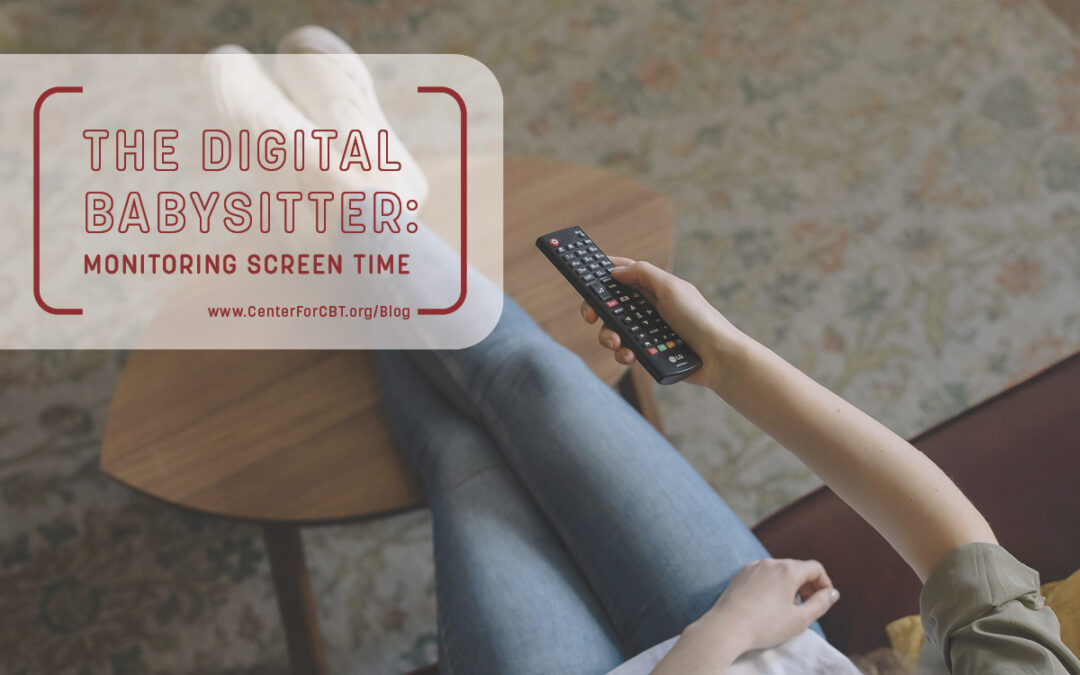Quarantine has brought about a host of stressors for parents, but few as divisive as placing limits around screen time. Consumption of media among children has significantly increased as technology has become more accessible and widespread, with additional upticks in recent months due to the changes in lifestyle instigated by Covid-19. The American Academy of Pediatrics (AAP) policy statements for young children and adolescents offer specific recommendations and guidelines based on age, in addition to an overview of the educational benefits and health-related concerns of screens. However, given the current climate, the AAP acknowledges that a one-size-fits-all approach has grown less practical, and advises the development of a personal media plan that best meets the needs of individual children and their family as a whole.
It’s ultimately up to parents and caregivers to determine how much screen time is okay for children, but this is particularly challenging now that in-person interaction and hobbies are limited. The summer months left many families without their usual resources of summer camp and daycare. This change in lifestyle continues to develop as kids transition back to in-person education, and many schools are adapting to hybrid or remote learning approaches. At the end of the day, children and teens are still generally spending more time at home now than they were earlier this year. Screen time has become a sort of “digital babysitter” for parents to keep their children busy, and all ages are relying heavily on technology for education, entertainment, and social connections.
In response to these lifestyle changes, how do you decide how much screen time is okay? And once you do, how do you set limits? It can be challenging to know how much is too much when the rules seem different now than they did a few months ago, but we’ve compiled some information and tips to help you come up with a plan that’s right for your family.
Weighing the Pros + Cons
Based on the media’s coverage of screen time, you might think it’s all bad, all the time. However, there are actually several benefits. Screen time can help foster relationships and help you feel socially connected— something that’s even more important now that opportunities for in-person interaction are limited. Video chatting provides an easy way to stay in touch with loved ones, whether through talking or game night, and online games and social media can be a fun and engaging way to spend time with friends. In fact, research shows that online gaming with real-life friends can actually help to reduce loneliness. Playing video games can also produce a state of mind called “flow,” where you are completely immersed in an activity in a way that involves focus, full involvement, and high levels of enjoyment. Screen time can also promote learning, whether it’s through a virtual classroom, podcasts, or educational videos on YouTube.
Screens are not without drawbacks, and it’s important to weigh these factors against the advantages. With the accessibility of screens in the form of laptops and smartphones, we often find ourselves staring at them into odd hours of the night. Increased exposure to the blue light risk interference with the body’s production of melatonin, a hormone that lets your body know it’s time to sleep, which can lead to trouble sleeping. Excessive screen time is also associated with a higher risk of obesity. This is because the more time you spend sitting sedentary on screens, the less time you have to engage in active play or physical activity. The US government recommends that children ages 2-5 engage in active play several times a day, and that children ages 6-17 engage in at least an hour of physical activity daily in exchange for screen time. And while screens offer a portal to social connection and interaction, that may come at the cost of face-to-face interactions, meaning less opportunity for children to practice key social skills.
Although screen time does have some notable benefits, the challenges they present must also be taken into consideration. However each individual has their own needs, and the appropriate amount of screen time will vary from between children and across families. That’s why it’s important to create a balance between screen time and other activities, so that you can reap the benefits and mitigate the drawbacks.
Tips for Success
Finding the balance between screen time and other activities may be easier said than done. Even when you know the drawbacks of screen exposure, the ease of setting your child up with a screen-based activity is still a tempting option. To help keep you and your family on track, consider these ideas as a guideline of reference:
- Mitigate the negative consequences. Rather than fully restricting screen time, focus on decreasing the potential negative outcomes. Restrict access to screen time in the hour before bedtime and encourage your children to engage in low-energy activities instead, such as puzzles or reading. If you’re concerned about sedentary behavior, try creating a point system where your child can earn screen time by engaging in physical activity or exercise. On the flip side, screens themselves can actually help your child get active. Some video game consoles, such as the Nintendo Wii, have physical activity built into their games, and YouTube has a ton of exercise videos that are fun for both kids and adults.
- Create screen-free zones. Ditch the screens in favor of more in-person interaction, like when you’re all together at the kitchen table. When mealtimes are screen-free, children (and parents!) can pay better attention to their hunger and fullness cues. This also provides a great built-in opportunity for parents and children to spend time together. Consider setting out a basket to drop your phones into as you sit down to eat.
- Develop a routine. Designate times for when screens are and are not available. Try your best to be consistent with this every day, because when kids know what to expect, they will be less likely to push back when access is restricted. If your child frequently has trouble turning off the tablet, phone, or computer when asked, try providing a 10 minute warning. This allows children to anticipate when access will end, and will give them a chance to wrap up whatever they’re doing. Additionally, consider rewarding your child for getting off his screens on time, perhaps by allowing some extra time during the next watch session.
- Model appropriate usage. If you’re on your phone all day long, you’re going to have a tough time convincing your child that they shouldn’t be doing the same thing. If you can limit your own usage, your child will be more likely to follow suit.
- Create a list of alternatives. Sit down with your child and come up with a list of activities that don’t require screens. Keep this is an easily accessible location; when your child complains that there’s nothing to do (which they inevitably will) you can point them in the direction of the list.
Screens have become a ubiquitous presence in our lives, and the effects of the pandemic have made it even more challenging to limit access. Eliminating screen time all together just isn’t practical, which is why the goal is to instead find a balance that works best for your family. There’s a learning curve to this new lifestyle, and it will likely take a fair amount of trial and error to develop a plan that works well. It may be difficult to get through the day without the full-time help of your “digital babysitter,” but through perseverance in adapting to a limited screen time routine, you and your family can work towards a happy and healthy medium.



